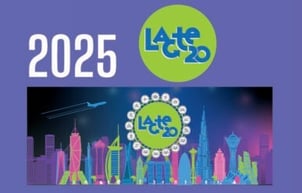Conference interpreting hasn't changed much since 1945 - but it has definitely undergone a seismic shift since 2020. With the majority of events being canceled or moved online because of social distancing, interpreters had to adapt quickly to not miss out on interpreting opportunities. Fortunately, Remote Simultaneous Interpretation technology already existed and those who adopted the technology could resume work successfully.
Two years into the pandemic, restrictions start to ease and remote real-time interpretation is still in vogue. Why is that? Let's look at some of the benefits of RSI for interpreters and event and meeting organisers to understand why Remote Simultaneous Interpretation is here to stay.
But let's start at the beginning.
What is Remote Simultaneous Interpretation, or RSI?
Simultaneous interpretation is defined by ISO, the International Standards Organisation, as the process of rendering a spoken or signed message into another spoken or signed language, preserving the register and meaning of the source language.
Add “remote” to the equation and it is possible for interpreters, speakers, and participants to interact from anywhere on the planet. Remote simultaneous interpretation usually involves cloud-based remote simultaneous interpretation technology, such as Interprefy to provide a virtual interpreter interface and a video conferencing user interface, or mobile app for attendance with a language selector for the audience.
- Interpreters work on a RSI soft console to access speech audio and video on their computer and translate the speech in real-time.
- Delegates and attendees listen to live translation of the speech with extremely low latency through a mobile app, web conferencing software on their computer or conferencing hardware.
Remote simultaneous interpretation (RSI) is the process of remotely interpreting or translating speech from one language to another whilst it’s in progress.
What are the benefits of Remote Simultaneous Interpretation for interpreters?
Pandemics aside, RSI seems to have brought some undeniable benefits for interpreters, when comparing it to traditional modes of conference interpreting, where an interpreter needed to travel to the conference, block a whole day in their diary and perform from a booth at the venue:
- Improved work-life balance — With less travel and working from home, interpreters are now able to have a routine and spend more time with family and friends.
- Less waiting times —Very much in line with the point above, interpreters no longer have to wait at airports, at venues between conferences, or for transport and accommodation.
- New interpreting opportunities — Because connections are done remotely, interpreters can now interpret in several meetings in one day, even if they happen in distant places. For instance, an interpret in Madrid can now interpret at a meeting taking place in Sydney in the morning and for one taking place in California in the evening, impossible without RSI.
- More language combinations — thanks to RSI, interpreters can now access jobs and even learning opportunities, based on their language combinations and not only on their place of residence. This also implies that relay is needed less than before RSI.
- Interpreting becomes a more accessible role — interpreters can now work in an environment that is familiar and tuned to their needs. This is especially beneficial for disabled interpreters.
Back in 2020 and in collaboration with our partner Interprenet, we asked interpreters around the globe to share how Covid-19 had affected their work and this is what they said:
What are the benefits of RSI for event and meeting organisers?
Simultaneous interpreting used to be an expensive and exclusive service that entailed, as we've explained above, paying for flights and accommodation for interpreters and renting cumbersome equipment such as hardware-equipped interpreter booths or radio receivers for attendees. That made real-time interpreting an option only large international and government organisations could afford.
RSI technology allows the interpreters to work from anywhere in the world while your attendees can be located onsite, online, or both. This has democratised simultaneous interpretation by making it a service available for everybody: NGOs, associations, and even SMEs and for all types of event setups: online, in-person, and hybrid.
Let's look at some additional benefits that Remote Simultaneous Interpretation provides to meeting and event organisers:
- Reduced admin — no need to organise flights and accommodation for interpreters.
- More floor space — as interpreters will be working remotely, you will no longer need bulky soundproof booths, freeing up valuable venue space.
- Reduced costs — you no longer need to pay for transport and accommodation expenses for interpreters or for a bigger venue that can fit interpreting booths.
- Reduced event carbon footprint — interpreters will work remotely removing the need to travel and reducing the carbon footprint of your multilingual meeting or event.
- Greater versatility— with RSI, the sky is the limit. Interpreters will work remotely while your audience is onsite, online, or both. RSI can even be delivered to all online meeting platforms.
- More interpreters to choose from — Because interpreters can be located anywhere in the world, you are no longer restricted to those located nearby, and get access to a worldwide pool of talent.
- More languages to offer — Because the costs associated with RSI are lower than with traditional simultaneous interpretation, you can offer more languages to your attendees. Also, thanks to RSI you can now provide attendees with interpretation in rare language combinations.
- Meetings and events more accessible— Having the content of your event available in different languages and setups not only increases your events' reach but also makes it more accessible and increases engagement.
- Hassle-free-tech— There is no longer a need for expensive on-site interpretation equipment. With RSI, interpreters will only require a computer, a resilient internet connection, and solid audio equipment, such as a tabletop microphone or a USB headset to perform on a remote-simultaneous interpreting platform on the cloud. Your audience can then access interpretation on their mobiles, desktops, or traditional radio receivers, depending on your event or meeting setup. What's even better is that, with the right RSI provider, all parties will also get technical remote support throughout the event.
- High-fidelity sound — Despite not relying on expensive equipment like IR and radio transmitters, Remote Simultaneous Interpretation is capable of delivering full bandwidth (20Hz - 20kHz) sound at extremely low latency—along with high-quality video and lip-sync.
- Interoperability & hybrid-ready - RSI technology such as Interprefy, can be easily combined with on-site AV equipment and web conferencing technology. So it doesn't have to be a decision of "traditional setup vs RSI", but the two can neatly complement each other. So if you have your own interpreter teams on site and want to offer delegates more languages, RSI can easily be added into the mix.
In summary
RSI technology has made the meeting and events space more accessible and inclusive, by making simultaneous interpretation a service available and attainable for all meetings and events, no matter how small or big they may be.
Whether you're going for a fully online, in-person, or hybrid event format, Interprefy can help your event reach its maximum potential with our RSI technology, project management, and remote support services, as some of our customers explain.
Want to learn more about Remote Simultaneous Interpretation?
Read or Ultimate Guide to Remote Simultaneous Interpretation here.





 More download links
More download links



